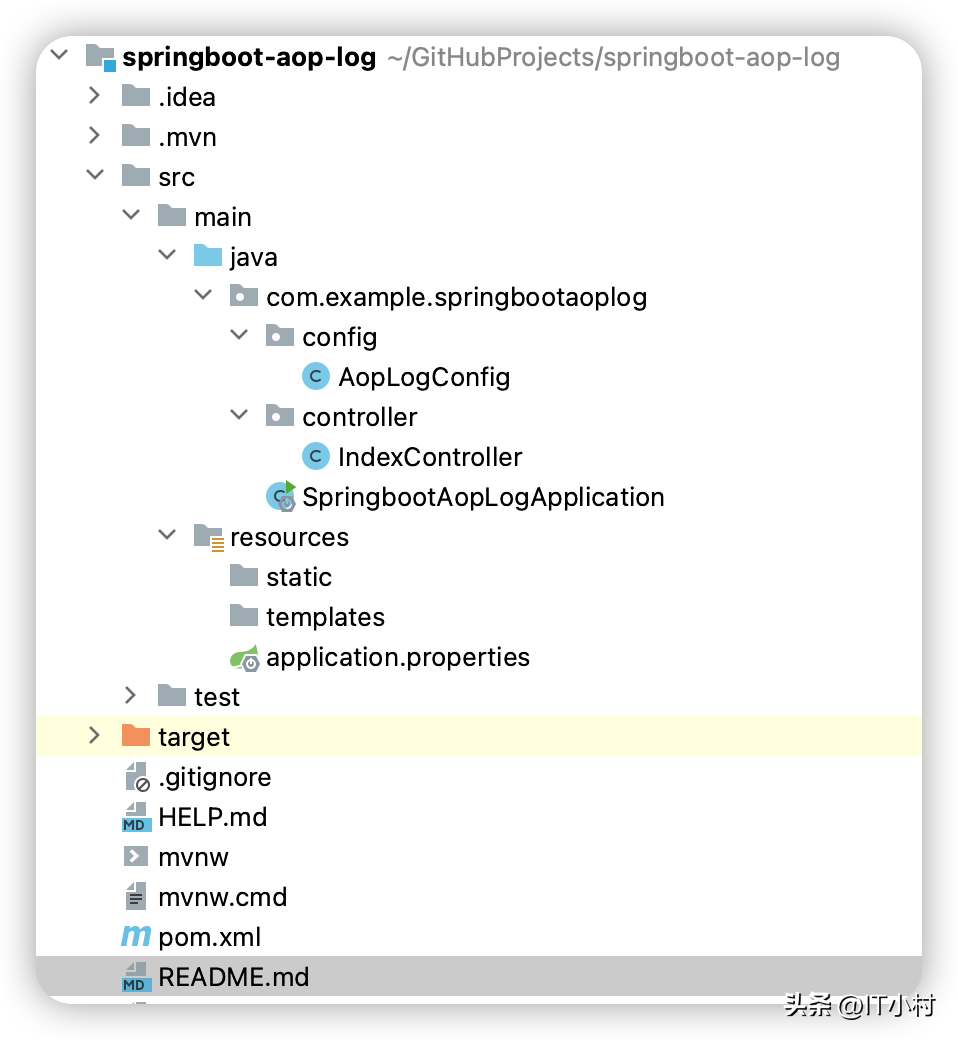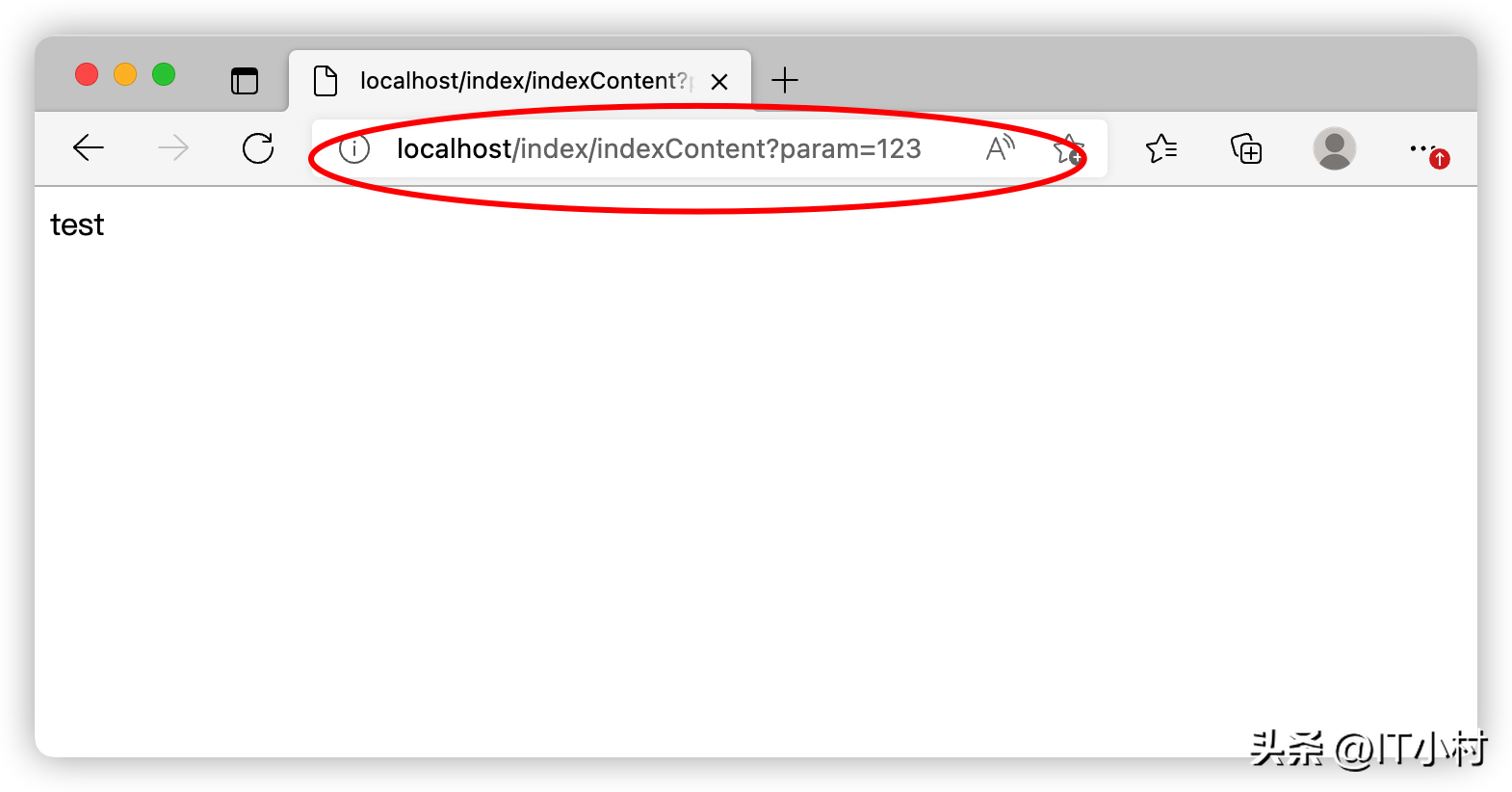前言
最近在维护一个运营端的系统,和前端联调的过程中,经常需要排查一些交互上的问题,每次都得看前端代码的传参和后端代码的出参,于是打算给HTTP接口加上出入参日志。
但看着目前的HTTP接口有点多,那么有什么快捷的方式呢?答案就是实用Spring的AOP功能,简单实用。
思路
定义个一个SpringAOP的配置类,里边获取请求的URL、请求的入参、相应的出参,通过日志打印出来。
SpringBoot的aop依赖:
<dependency>
<groupId>org.springframework.boot</groupId>
<artifactId>spring-boot-starter-aop</artifactId>
</dependency>- 1.
- 2.
- 3.
- 4.
示例

1.编写一个HTTP接口
定义了一个Controller,里边就一个方法,方法请求类型是get,出入参都是简单的一个字符串字段。
package com.example.springbootaoplog.controller;
import org.springframework.web.bind.annotation.GetMapping;
import org.springframework.web.bind.annotation.RequestMapping;
import org.springframework.web.bind.annotation.RestController;
/**
* @author hongcunlin
*/
@RestController
@RequestMapping("/index")
public class IndexController {
@GetMapping("/indexContent")
public String indexContent(String param) {
return "test";
}
}- 1.
- 2.
- 3.
- 4.
- 5.
- 6.
- 7.
- 8.
- 9.
- 10.
- 11.
- 12.
- 13.
- 14.
- 15.
- 16.
- 17.
- 18.
- 19.
2.编写一个AOP日志配置
这算是本文的重点了,定义一个AOP的内容,首先是切点,再者是请求前日志打印,最后请求后日志打印
package com.example.springbootaoplog.config;
import com.alibaba.fastjson.JSON;
import lombok.extern.slf4j.Slf4j;
import org.aspectj.lang.JoinPoint;
import org.aspectj.lang.annotation.AfterReturning;
import org.aspectj.lang.annotation.Aspect;
import org.aspectj.lang.annotation.Before;
import org.aspectj.lang.annotation.Pointcut;
import org.springframework.stereotype.Component;
import org.springframework.web.context.request.RequestContextHolder;
import org.springframework.web.context.request.ServletRequestAttributes;
/**
* aop日志打印配置
*
* @author hongcunlin
*/
@Slf4j
@Aspect
@Component
public class AopLogConfig {
/**
* 切点路径:Controller层的所有方法
*/
@Pointcut("execution(public * com.example.springbootaoplog.controller.*.*(..))")
public void methodPath() {
}
/**
* 入参
*
* @param joinPoint 切点
*/
@Before(value = "methodPath()")
public void before(JoinPoint joinPoint) {
ServletRequestAttributes requestAttributes = (ServletRequestAttributes) RequestContextHolder.getRequestAttributes();
String url = requestAttributes.getRequest().getRequestURL().toString();
log.info("请求 = {}, 入参 = {}", url, JSON.toJSONString(joinPoint.getArgs()));
}
/**
* 出参
*
* @param res 返回
*/
@AfterReturning(returning = "res", pointcut = "methodPath()")
public void after(Object res) {
ServletRequestAttributes requestAttributes = (ServletRequestAttributes) RequestContextHolder.getRequestAttributes();
String url = requestAttributes.getRequest().getRequestURL().toString();
log.info("请求 = {}, 入参 = {}", url, JSON.toJSONString(res));
}
}- 1.
- 2.
- 3.
- 4.
- 5.
- 6.
- 7.
- 8.
- 9.
- 10.
- 11.
- 12.
- 13.
- 14.
- 15.
- 16.
- 17.
- 18.
- 19.
- 20.
- 21.
- 22.
- 23.
- 24.
- 25.
- 26.
- 27.
- 28.
- 29.
- 30.
- 31.
- 32.
- 33.
- 34.
- 35.
- 36.
- 37.
- 38.
- 39.
- 40.
- 41.
- 42.
- 43.
- 44.
- 45.
- 46.
- 47.
- 48.
- 49.
- 50.
- 51.
- 52.
- 53.
3.结果测试
我们通过浏览器的URL,针对我们编写的http接口,发起一次get请求:

可以看到,日志里边打印了我们预期的请求的URL和出入参了:

说明我们的程序是正确的了。
最后
本文分享了通过Spring的AOP功能,完成HTTP接口的出入参日志的打印的方法,同时也说明,越是基础的东西,越是实用。



































